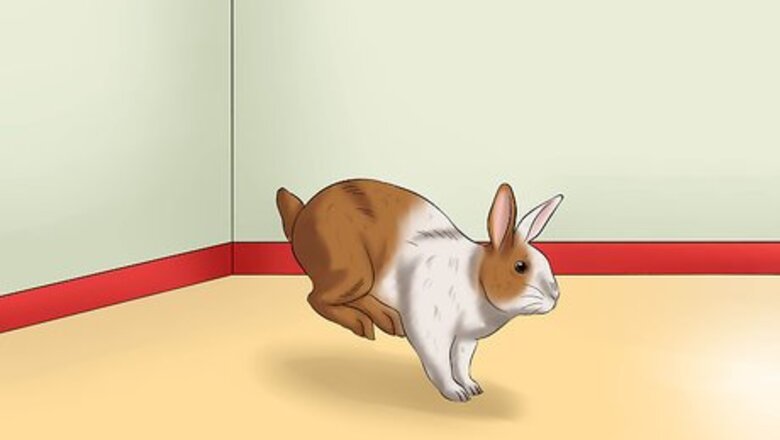
views
Providing a Stimulating Environment
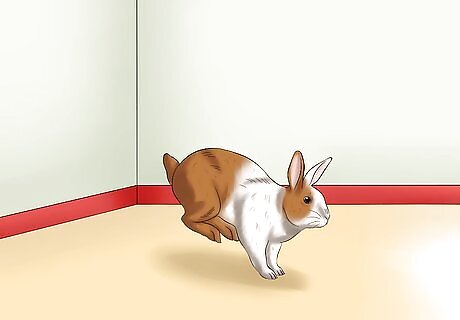
Provide space to run around. Rabbits are very active so you should make sure you give her plenty of space to run around. This also means giving her several hours out of the cage or hutch every day. Before you let your rabbit loose around your house you should be sure to take time to rabbit proof your home first. Generally rabbits are most active in the early morning, late afternoon and overnight. These are the times when rabbits typically forage for food and socialise with other rabbits.
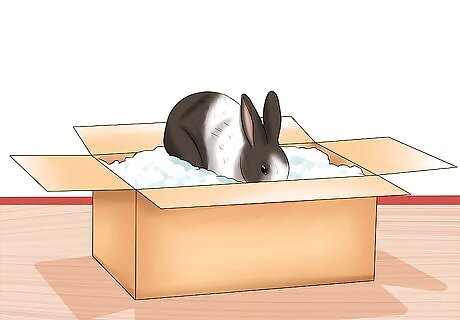
Give rabbits places to dig. As well as running around and socialising, rabbits are diggers. You need you provide opportunities to dig to make up for the fact that she cannot dig through your floor like she would dig holes outside. One of the best ways to provide digging opportunities is by giving her a digging box. These are very easy to make, and will fulfill your rabbit's digging needs. Just get a reasonably sized cardboard box, big enough for her to jump into, and half fill it with shredded paper. She will dive in and dig through the paper.
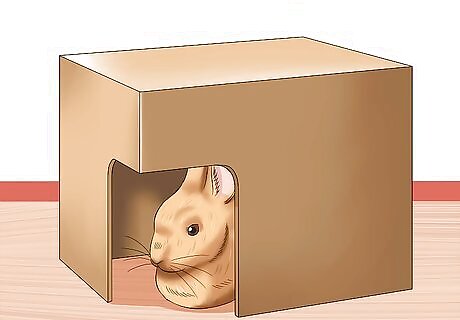
Give your rabbit places to hide. An important part of a healthy stimulating environment for a rabbit is having places where she can hide. They are a prey species with instincts that make them hide when they are afraid of something. Rabbits are very sensitive, and hiding is nothing for you to worry about, but you do need to be sure to provide good hiding spots to stop them becoming stressed. You should provide at least one hiding space per rabbit, as well as one that is large enough for them all to get into together. The space should have two entrances and exits, and have enough clearance for them to run underneath when spooked. You can make a hiding place from a wooden box, a drain pipe, or some shelves. Be sure to fill it with suitable bedding, such as hay or shredded paper.
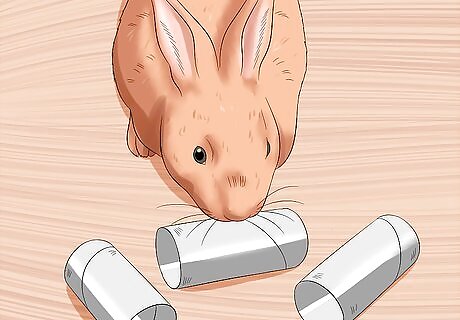
Have lots of toys and chewable things. Rabbits love to chew, and providing plenty of toys and other things to chew, such as toilet paper rolls, cardboard boxes, or even an old cotton towel, is an important part of keeping your rabbit entertained and happy. An old phone book can be a good thing to give a rabbit to chew up, but ensure that any toys you provide are safe to chew and there is nothing toxic. There are many ways to make homemade toys for your rabbit. Make sure you don't give your rabbit any toys which could be swallowed, or has any sharp edges. Regularly check toys to make sure that no sharp corners have developed, and remove them if they have. If you have any doubts about the safety of a toy, it is better to be safe and remove it.
Handling and Playing With Your Rabbit
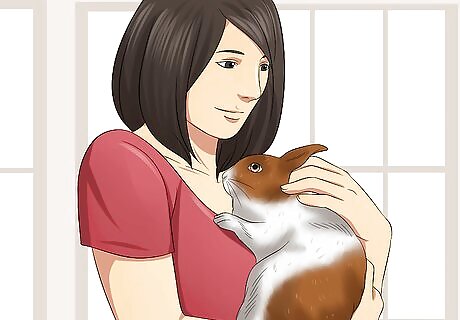
Learn how to handle your rabbit. Rabbits can be handled and can enjoy being handled, but it's crucial that you do it correctly and don't cause your rabbit to become stressed. You should never pick up a rabbit by the ears, and always supervise children around your rabbits. Generally it's advisable to start handling rabbits when they are young so they get used to it. Handling an adult rabbit who is not used to it can cause distress and she could scratch you. Before you pick up your rabbit, move very slowly and sit down on the floor so you are closer to her level. Carefully slide one of your hands under her ribs and lift her up while you lift her rear with your other hand. Hold her gently but firmly against your chest, and always keep one hand under her rear to support her. If you hold all four of her feet against your chest, she may feel more secure being held.
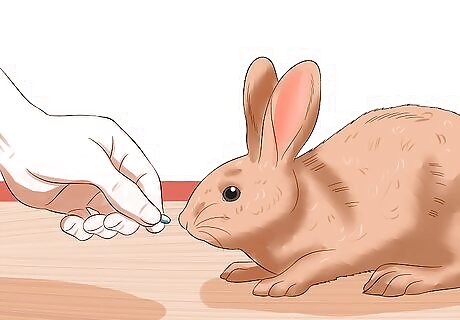
Spend time with your rabbit every day. Rabbits don't just like to socialise with other rabbits, they will often like to spend time with you. By putting time aside every day to sit down with her and interact, you will help develop a stronger bond. Try feeding her something by hand or giving her a toy to chew. Even if you are just in the room together, sat on the floor watching TV while she runs around, she is more likely to come and interact with you. Once you have gotten to know your rabbit a bit more you will learn more about her personality. Pay attention to how she acts and respond accordingly. If she likes being handled, handle her, if not, don't. The more attentive you are the more you'll learn about how she likes to play and when you can join in. If your rabbit seems bored, provide more toys and stimulation.
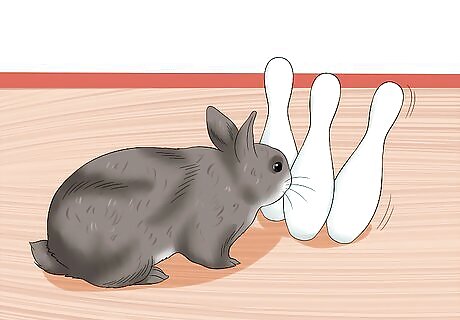
Play with your rabbit. Rabbits like to play with other rabbits, but also with you. Remember to be patient and get down low so you are at her level. Try to schedule in regular play times which fit into her daily routines. Rabbits will generally want to be left alone when eating and grooming. As they are often most active early morning and late evening, these can be good times to play. One of the games you can play with your rabbit is "bunny bowling". Set up some mini-bowling pins and watch as she charges into them and knocks them over. Try getting a ball with a bell inside that she can push and roll around. Once you have become good friends and your rabbit is comfortable around you, you can try to play chase. She will follow you around so run off and let her chase you. Try calling to her as you play.
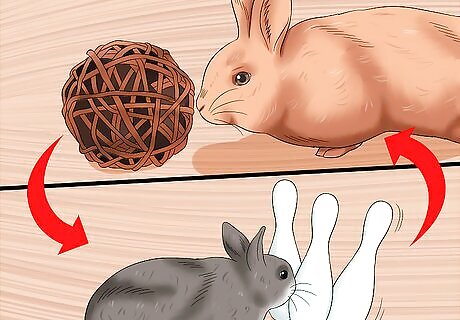
Rotate the toys. To keep your rabbit stimulated ensure that you rotate the toys which you provide for her. Don't leave all the toys out all the time, instead change the selection each week to increase the variety of her play. She will love to explore toys of different shapes, sizes and textures. This doesn't have to be expensive, but providing different toys will help keep her curious and entertained.
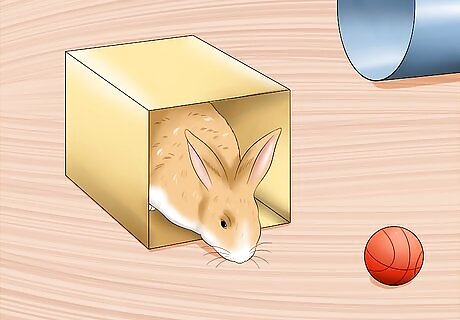
Make an obstacle course. Rabbits love to run around and explore their environment, diving through tunnels and jumping over obstacles. One great way to play with your rabbit and keep her happy and stimulated is build some obstacle courses for her. You can use cardboard boxes, tubes and anything that is bunny safe to play with. Give her things to jump over, crawl through and run around. Mix it up and provide new environments for her to explore regularly.
Giving Your Rabbit Some Companionship

Give her some companionship. Rabbits are highly sociable creatures, so an important part of keeping your rabbit happy and entertained is keeping her with at least one other friendly rabbit. Getting the right combination is important. A neutered male and neutered female that are the same breed and about the same size often works best. If your rabbit is left alone for extended periods she may develop some unusual behaviours and become generally less happy.
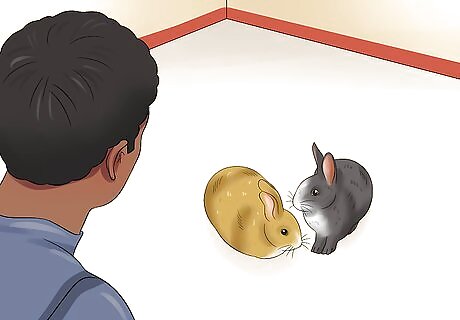
Introduce rabbits gradually. When you are providing rabbit companionship you should take care to introduce them gradually and monitor them closely. Rabbits who have been brought up together from an early age will generally get along, but there can be problems if they meet for the first time as adults. Speak to a vet or animal behaviourist if you are unsure what to do and your rabbits keep fighting.
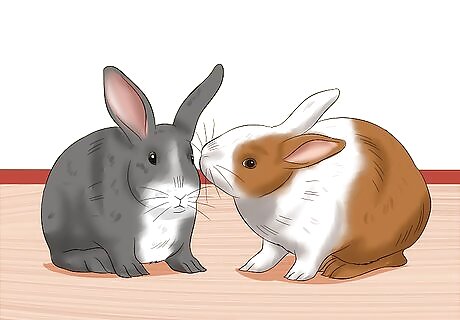
Try to allow your rabbit to choose her own companion. One way to try to get a good match is to let your rabbit meet potential companions before you decide which one to take. This is not always possible, but some animal rescues centres might let you bring your rabbit with you and place her in a pen with some other rabbits to see how they react. How the rabbits get along in a bonding session can influence your decision about which one to adopt. If you are trying a bonding session, just put your existing rabbit in a pen with another rabbit of similar size. Make sure it is a neutral space with plenty of toys and treats for them play with. Be sure to keep a close eye on them to see how they respond to each other and react quickly if they do not get along.



















Comments
0 comment